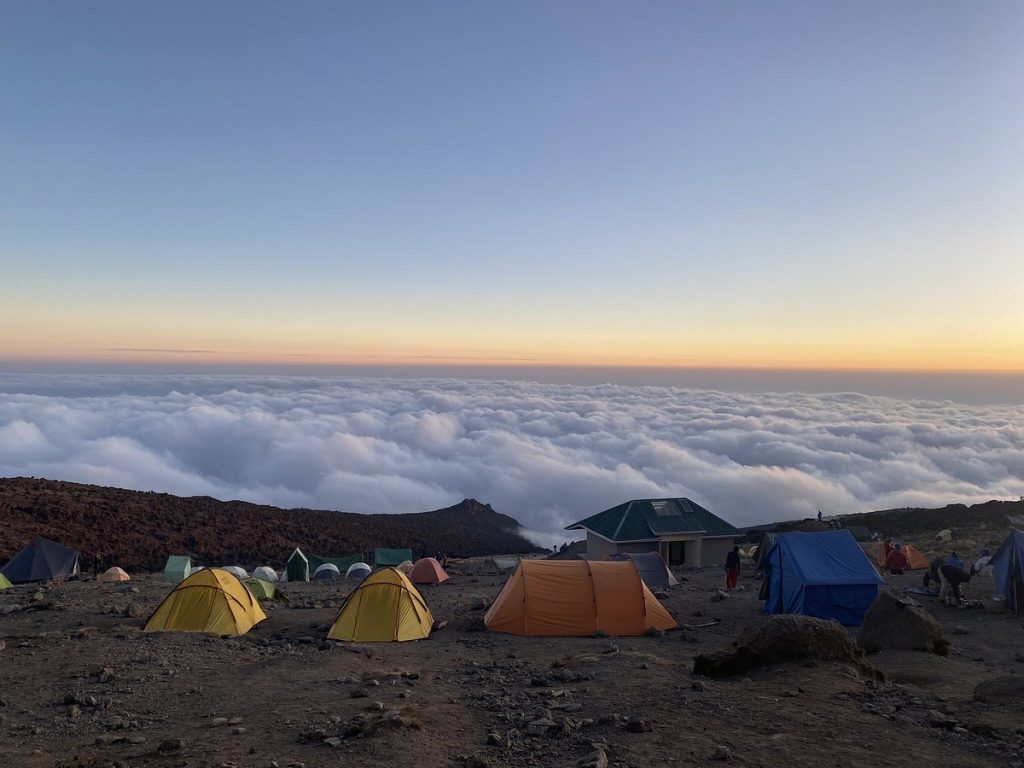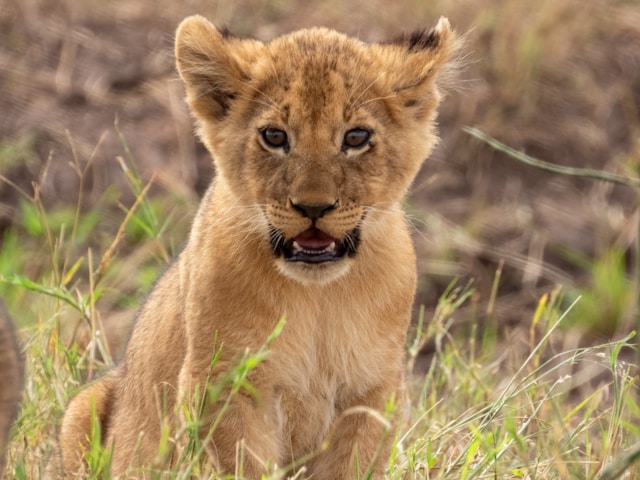Smaller, less known and less visited than the protected area of Ngorongoro or the Serengeti Park. Tarangire Park has kept all its authenticity and beauty. The tarangire national park covers 2,850 km2 and is located at an altitude of 1,100 m. Until its foundation in 1970, the nomadic Maasai pastoralism lived there. It was their land, their Garden of Eden, for generations. Then the park was created, and they were moved by the government to stop interfering wildlife.
The park offers vast landscapes of rolling plains and Baobabs are particularly numerous there. Large seasonal swamps cover the southern part. A river, the Tarangire, which gave its name to the park, crosses these vast expanses, serving as a watering hole in the dry season (from July to November) for thousands of thirsty animals: zebras, buffaloes, elephants, giraffes, elands, Coke hartebeests, impalas, warthogs, dik-diks. There are also some large predators (lions, panthers, and cheetahs), but they are much less numerous and can be seen by lucky if you have a well experienced guides.
Wildlife in Tarangire National Park
The best time to visit the park is from August to October. During these drought months, the park serves as a seasonal retreat for swarms of animals. They move freely, according to the seasons, in a vast ecosystem that extends far north to Lake Natron and the steppes of Kenya.
This great cycle of wildlife begins as soon as the rainy season arrives in March. The animals then begin their migration north. Tsetse flies are a frequent presence in this area. In April and May, it still rains and the vegetation is very green then the wildlife arrives (June) and the sound courses and crowds of animals drink along the Tarangire River. When the rains stop you will be able to witness much wildlife from June and July, other animals from the north are returning starting from August until October including elands, oryx, and zebras. The annual migratory cycle also includes the nearby Serengeti Park where it takes on an exceptional scale among wildebeest. According to conservation specialists, the Tarangire national park host, a large number of elephant per square compare to any other place in the country.
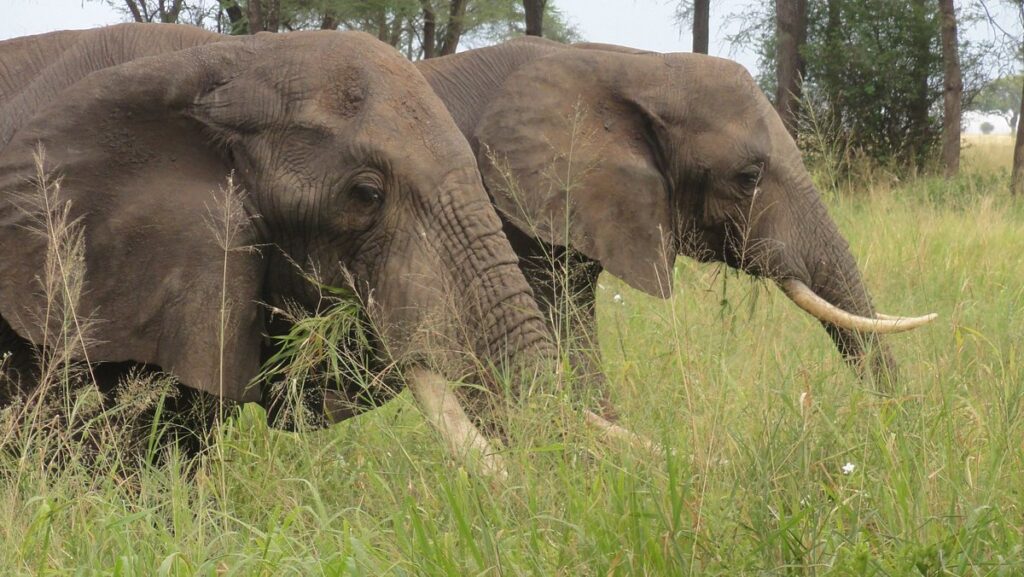
How to get to Tarangire National Park
The park is located approximately 120 km southwest of Arusha by road. From Arusha, take the direction of Dodoma. In Makuyuni, the main road branches off to the right to join the Serengeti and Ngorongoro parks. On the left, the road continues towards Dodoma and Tarangire National Park where there is a signboard showing the location of the road.
Flora and fauna in Tarangire National Park
The Elephants:
They can be found in most of the places inside the park, especially around the Tarangire river where they like drinking water. The Tarangire Park is believed to have a large number of elephants population in the region. Around 300 elephants can be found in the park and around the water streams.
The Baobab:
A big trunk thick and a tuft of twisted branches planted loosely on top. Humans use the baobab very little, although its young leaves are soft. Some locals hid their secrets in these trees, hence the respect and fear of this tree still inspires in Africa.
The baobabs that you see in Tarangire national park are often damaged by elephants. When they are hungry, they scratch the trunk with their tusks to eat pieces of bark. Besides the majestic baobabs, you can also see acacias trees. These trees are an ideal landmark for impalas, giraffes, cobes and hartebeest.
You will witness klipspringer and hyraxes evolve near the rock piles located in the center of the park. Lesser kudu and crescent cob seek out acacia Commiphora, while Grant’s gazelles frolic around acacia drepanolobium.
The Termites:
Numerous termite mounds, isolated or leaning against the trunk of baobabs, punctuate the landscape of Tarangire Park. One can hardly imagine how these strange mounds of earth, sculptures of surrealist cinema, can be built by such small beasts as termites.
The secret of termites is a sense of organization. They live in the dark, in colonies, and sometimes in millions under a single termite mound. Their society is divided into castes and is based on the authority of a queen whose enormous abdomen can reach 20 cm long. Privileged, she is content to reign, living in the heart of a labyrinth of narrow galleries, in a special room.
She does not work and spends most of her time laying eggs. Nearly 10,000 eggs a day! Termites ignore the anxieties of the demographic recession. The only male allowed to have sex with the queen is none other than the king. Around this unique queen, stand the termites-soldiers who ensure the safety of the place. They guard the entrances to the termite mound. Their food is provided by worker termites who spend most of the time building these palace fortresses from which they never leave. Except in the rainy season, when you can see them outside the termite mounds, looking for sites to establish new colonies.
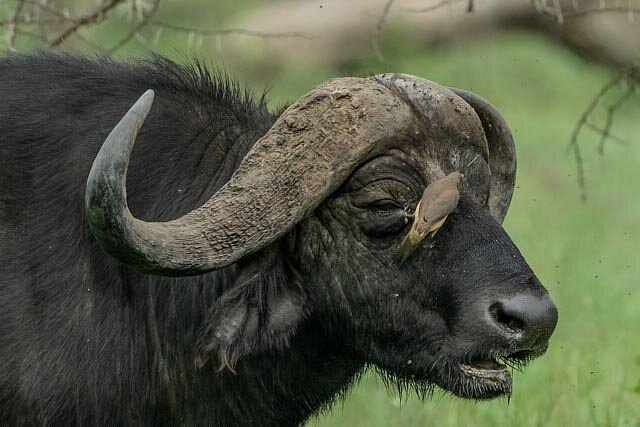
The Pythons:
Increasingly rare, Know first that they like wet and rocky areas. Here is a rare creature 3 to 4 m in length on average in an adult, a curious V drawn on the top of his head, and jaws capable of opening to 30 degrees in humans. The pythons leave the marshes as soon as the water level drops, and take refuge on the branches of the acacias, around which they wrap themselves.
Their favorite prey are small antelopes or gazelles, as well as rodents, hares, monkeys and small warthogs. Contrary to popular belief, pythons have no venom, they kill by suffocation. With a wise step, they drop from their branches on their prey and wham ! They curl up on them, and suffocate them before swallowing them whole, head first. It is nothing for a 6 m long python to swallow a 50 kg victim.
One problem, however, is that gazelle’s horns and porcupine quills can pierce the python’s skin. Fortunately, the gastric juices of this reptile are so powerful that very often the growths are quickly digested inside. So, what protrudes outside and no longer has any attachment ends up simply … by falling.
This is an unknown force of nature! A python takes days or even weeks to digest such feasts. And, even if he is not a disciple of Gandhi, he can go up to two and a half years without eating, living on his own reserves. Sometimes a hungry or threatened leopard pounces on a python to defend itself. In addition, if it feels its young threatened, the warthog will throw itself recklessly on this reptile.
Tarangire national park is with no doubt among the best places to visit in Tanzania if you are real looking for an authentic wildlife Day Safari adventure from Arusha or multi-day tours. You can choose to sleep inside the national park, camping or lodge depend on your interest or take a night outside the park around Mto wa mbu town. Contact one of our expert to arrange a safari for you to this amazing place.
Matete and Lemiyon Area:
Lemiyon and Matete regions make up the park’s northern part. The region has a vast network of roads and trails, making it simple to go there given their proximity to the park’s entrance. When taken as a whole, they include a wide range of ecosystems, including grassy plains (where fringe-eared oryx may be observed), umbrella and flat-topped acacia forest (excellent for birds), and more open woodland to the east, which is predominately made up of baobab trees.
The acacia woodland offers year-round shelter, food, and a plethora of birds, making it ideal for wildlife viewing. Both regions are frequented by olive baboons and velvet monkeys, which congregate particularly around picnic places where they forage for food. Be cautious of baboons, since they may be hazardous, especially if you have food in your line of sight.
The Tarangire River (Mto Tarangire):
The Tarangire River, which serves as Matete’s and Lemiyon’s western and southern borders, is the park’s unrivaled draw. Although the river is ideal for wildlife all year round, the dry season, when the migration is at home around the river’s Water pools, is when the river is at its finest. Bring binoculars to the picnic area and vistas along the northern bank of the river where it runs from east to west because of the area’s sandy bluffs.
This river’s east-west section can be crossed at two locations: a concrete causeway in the west (during the dry season only) that leads to Lake Burunge, and Engelhardt Bridge, which provides access to two south–running routes: Ridge Road that descends to Gursi Swamp and West Bank Road that follows the river. Another route that leads down to Silale Swamp follows the east bank and may be reached from Matete. You may get close to animals on any of these riverfront drives.
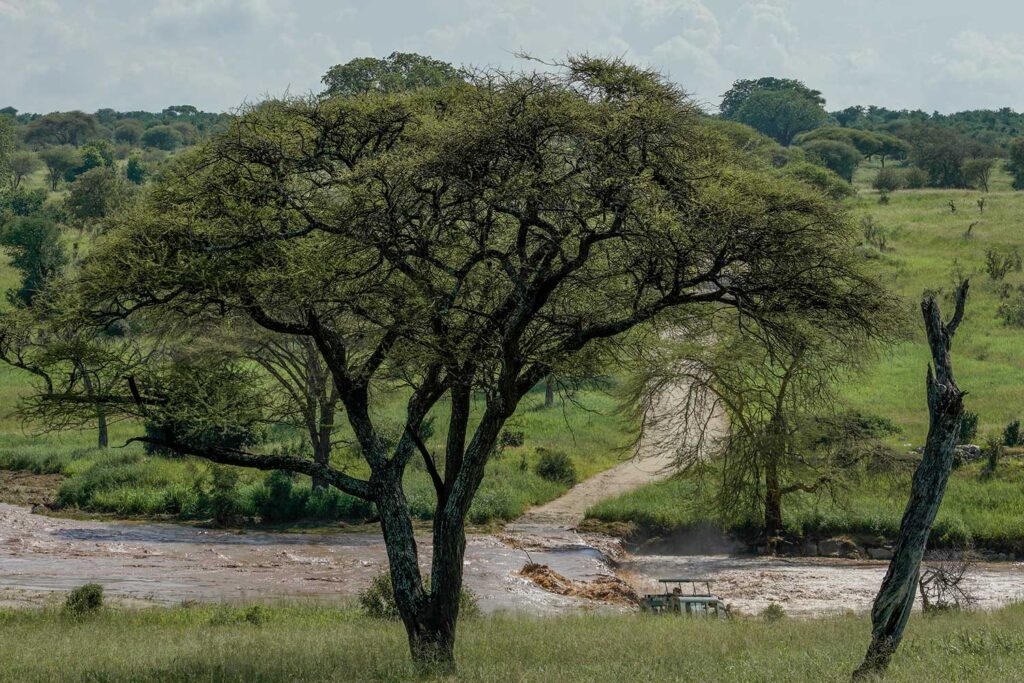
Numerous watering holes in the dry season draw vast crowds of thirsty zebra, wildebeest, elephant (who dig out many of the watering holes themselves with their trunks), giraffe, eland, gazelle, impala, warthogs, and buffalo. Olive baboons dwell there, and lions are frequently spotted close as well. Hartebeest, lesser kudu, and leopard are suitable for the bush on each side since they may rest in the trees during the day and only give away their presence with a tail flick. There are a number of dry-season causeways and tiny bridges that can be used to cross this portion of the river before it turns west.
South of Matete, around 6 kilometers north of the left towards Tarangire Sopa Lodge, there is a nice picnic area by the river. The location, beside a large mango tree, offers a good view of the river at a location where elephants frequently bathe in mud.
Lake Burunge (Ziwa Burunge):
Near the western edge of the park, the Tarangire River drains into Lake Burunge, a small soda lake that is home to flamingo flocks from July to November. The Great Rift Valley’s western escarpment forms a picturesque backdrop to the lake’s rather huge size. Since the lake has no outlet, the salts and other minerals the river swept into it have made it uninhabitable; yet, when it rains, the water is fresh enough to be used as a watering hole by animals like lions and elephants (look for their tracks in the mud).
Due to the lake’s extreme shallowness (just 2m), its size varies greatly. At the conclusion of the dry season, it usually dries out completely, leaving nothing but a sheen of salt-encrusted on its surface.
South of the park entrance, the road from the north crosses the Tarangire River; the last 3 km of this route are inaccessible in the rain. It’s not the best place to see wildlife, although you could see lesser kudu or eland, steinbok hiding in the bushes, or tiny herds of the timid and uncommon fringe-eared oryx. Tussock grass plains and clusters of fan palms may be found closer to the lake. They are surrounded by acacia woodland, scattered baobabs, and strangely imposing “trees” that resemble cacti called candelabra euphorbia.
At either end of the migration, when the plains are overrun by vast herds of zebra and wildebeest, the wildlife is at its most abundant. Tsetse flies, particularly in the area of wildebeest, are the predominant species to leave a mark, literally.
Ridge Road:
Ridge Road, a wonderful 40-kilometer drive through acacia forest to Gursi Swamp that offers stunning vistas over much of the park and beyond away, begins at a right fork immediately south of Engelhardt Bridge. While there isn’t as much wildlife as there is along the river, there is still a good variety, with largely solitary elephants, giraffes, elands, warthogs, and buffalo. The best places to watch them are at two sets of clearly marked buffalo ponds that are located along the route.
The hide is a massive, ancient baobab tree, the trunk of which has been hollowed out and has a little door carved into it. Many theories have been put up on the original purpose of the hide, but it is likely that hunter-gatherers—possibly the ancestors of the Hadzabe tribe of Lake Eyasi—used it as a shelter or for maintaining honey bee hives. Animals use the hide; hyena cubs, bats, and bat-eared foxes have all been spotted inside.
Tarangire Swamps:
Access to the marshes in central and southern Tarangire is feasible during the dry season. The Tarangire River’s feeder marshes are one of Tanzania’s greatest locations for birding, notably waterfowl from November to May.
The receding waterholes and residual sections of marshland, which are present throughout the dry season as the swamps start to dry, also provide excellent opportunities for wildlife viewing, including huge buffalo herds of up to a thousand animals and elephants that are hankering after mud baths. The two that are most accessible are Gursi Swamp, which lies at the end of Ridge Road not far from Swala Camp, and Silale Swamp, which is at the end of East Bank Road at the park’s eastern boundary.
Gursi Swamp is completely encircled by a game track, and most of the grassland on its edge is peppered with towering termite mounds. In the woods, giraffes and bushy-tailed ground squirrels are also common. Perhaps the birding is greater at Silale Swamp, which is open all year.
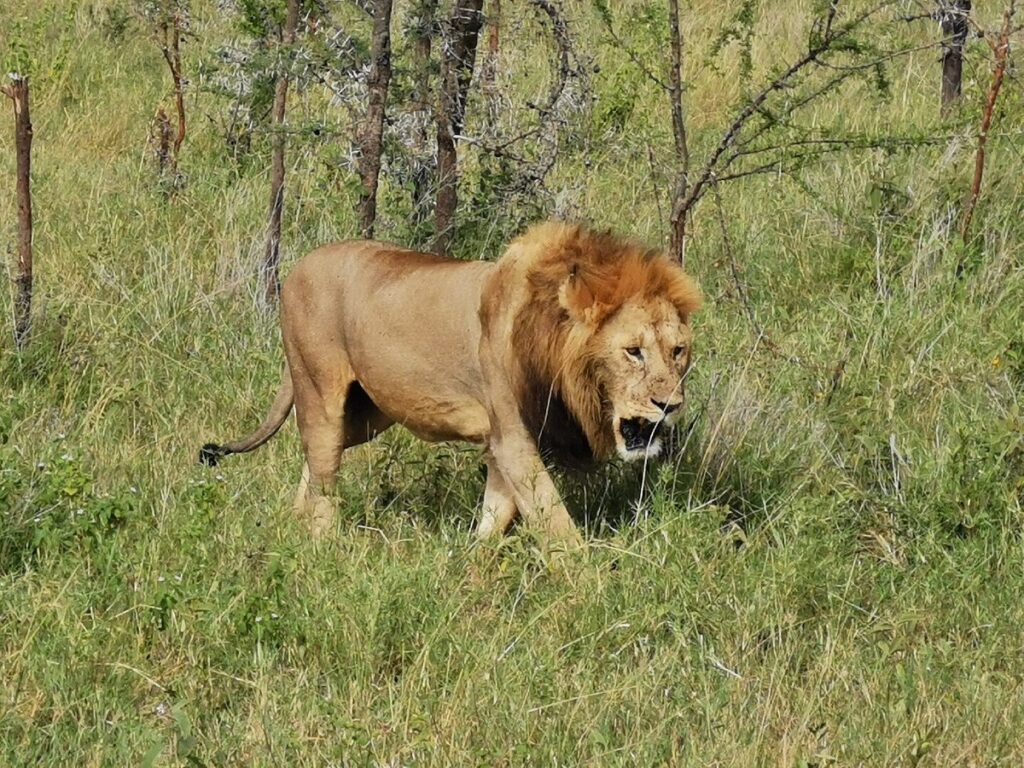
In October, lions are frequently observed on the western side feasting on herds of zebra and wildebeest. Huge tree-climbing pythons are rumored to live in the nearby forests. Silale connects with the massive Lamarkau Swamp (whose name originates from the Maasai word for “hippo”) at its southernmost point, while Lamarkau Swamp itself merges with Nguselororobi Swamp (Maasai for “cold plains”).
Although the Tarangire River doesn’t flow continuously in the conservation area, several seasonal “sand rivers” transform into water pools during the dry season, when animal viewing may be greater than in the park. Impala, Thomson’s gazelle, oryx, dikdik, ostrich, giraffe, wildebeest, and of course elephants, who live there all year round, are among the animals that are likely to be seen.
While all of the camps and lodges provide guided bush walks, they are the ideal way to experience the outdoors without being constrained by park restrictions, which is where the area’s true enchantment resides. The opportunity to observe normally elusive species like leopards and fringe-eared oryx is provided by night game drives, which are equally unique. Strangely, the lighting doesn’t appear to bother them. You will either need to go on a planned safari (contact us for further information) or spend the night at one of the lodges or camps to view the region.

